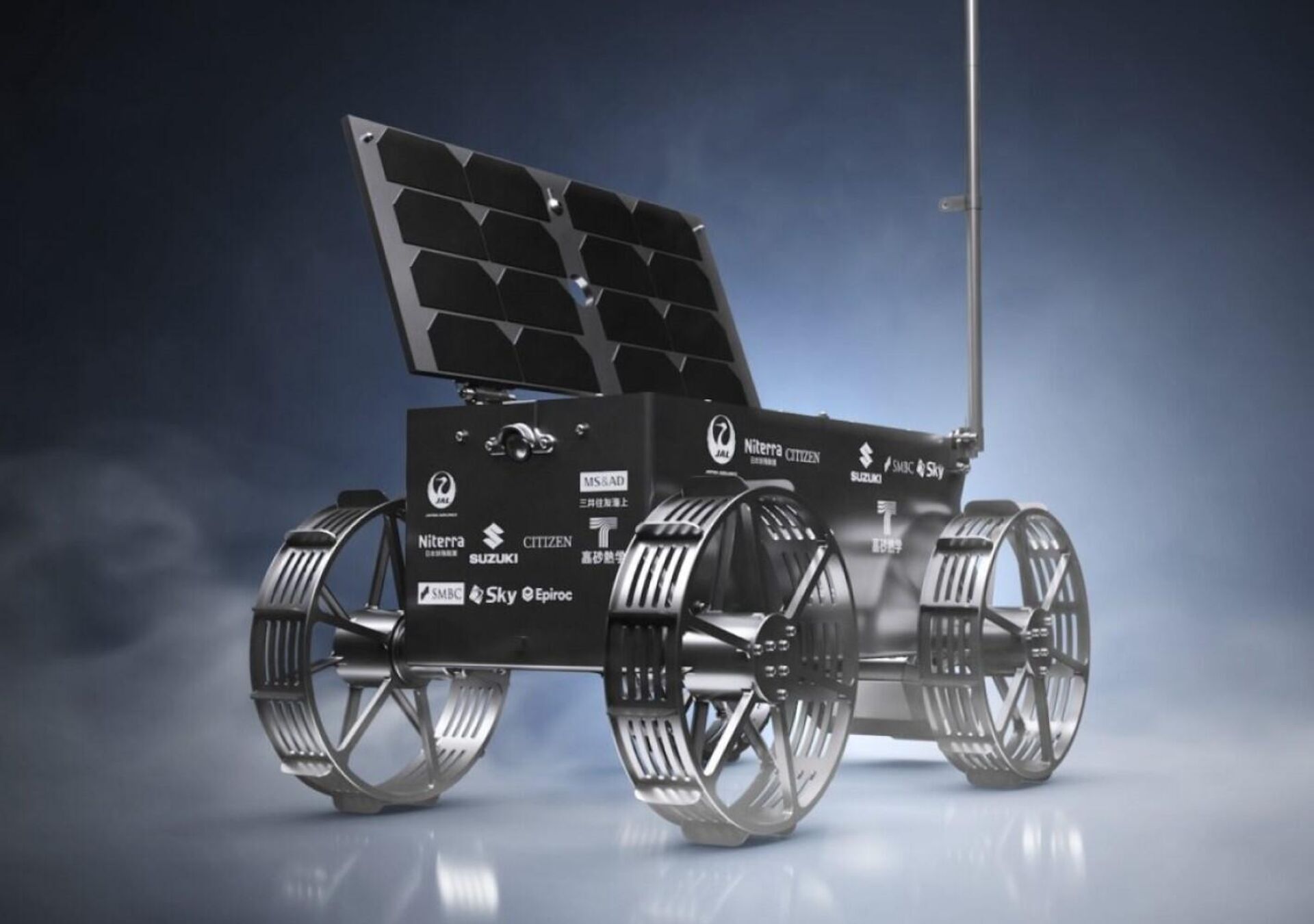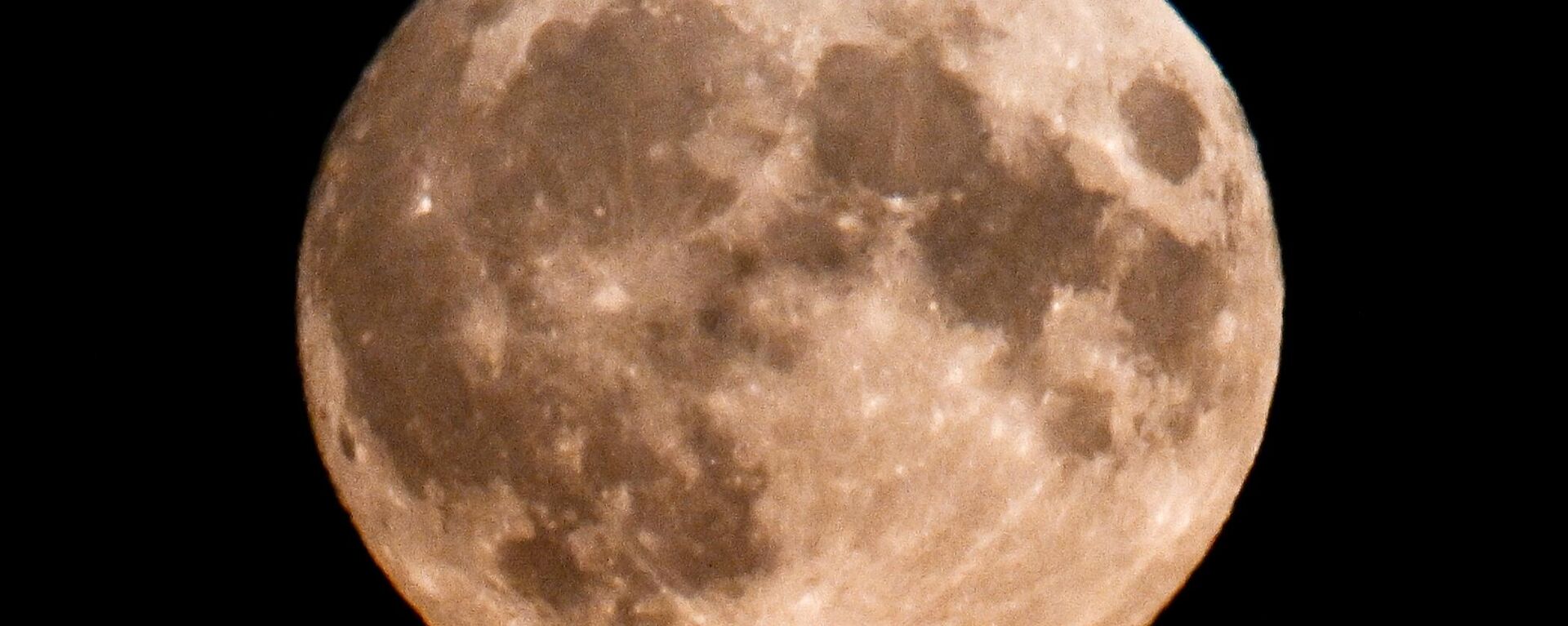Photo: Japanese Firm Unveils Micro-Rover for Second Lunar Landing Attempt

© ispace
Subscribe
A Japanese company that previously attempted to land a spacecraft on the moon has announced it will make a second attempt that will include a tiny rover about the size of a microwave oven.
Tokyo-based ispace announced recently it had selected the final design for a micro rover intended to be included on its next lunar mission, scheduled for “no earlier than winter 2024.”
In a news release, ispace included a computer-generated image of the rover, which has four pedaled, waterwheel-like wheels, a vertical antenna, and a set of solar panels that seem to be mounted on a hinge that lifts up from the top of the rover.

A computer-generated image of the micro rover design unveiled by Japanese space firm ispace on November 16, 2023, for the Mission 2 program, which will attempt a lunar landing in the winter of 2024 at the earliest.
© ispace
The rover’s dimensions are miniscule: 0.24 inches (26 centimeters) tall, 12.4 inches (31.5 cm) wide and 21.26 inches (54 cm) long, and it will weigh about 11 pounds (5 kilograms).
By comparison, NASA’s Perseverance rover on Mars is about the size of a sport utility vehicle and weighs 2,260 pounds (1,025 kilograms), and China’s Yutu-2 rover on the moon is about the size of a small golf cart (1 meter by 1 meter by 1.5 meters) and weighs 310 pounds (40 kilograms).
The micro-rover will carry a forward-mounted HD camera for taking photos of moon dirt that it will scoop up with a shovel.
“Mission 2, part of the HAKUTO-R lunar exploration program, will serve as the company’s second technological demonstration, based on lessons learned from Mission 1, with the objective of further validating the lander’s design and technology, as well as ispace’s business model to provide reliable lunar transportation and data services,” the company said.
Mission 1, of course, didn’t go so well: as the spacecraft began its final descent to the lunar surface this past April, it misjudged its altitude and crashed into the moon. The spacecraft was remotely operated from Earth, so nobody was harmed in the crash.
“During Mission 2, ispace will conduct initial resource exploration activities, primarily with its micro rover, which is being designed, manufactured, and assembled by engineers in its ispace EUROPE office. The exploration activities will be an important advancement in achieving ispace’s goal and vision of establishing the cislunar economy,” ispace added.
After Mission 2, ispace is also working on Mission 3, scheduled for 2026.
The missions come amid a flurry of moon missions after years of humans largely neglecting the lunar surface in favor of missions to Mars or other planets. Another Japanese lander, the Smart Lander for Investigation Moon (SLIM), build by the state-backed Japan Aerospace Exploration Agency (JAXA), made its first close flyby of the moon last month ahead of a future landing date.
In August, India successfully touched down its Chandrayaan-3 lander on the lunar south pole, and the latest of China’s moon landers, Chang’e-6, is set for launch in May 2024. Russia’s Luna-25 mission attempted to land on the moon in August as well, but failed after incorrectly measuring its velocity and crashed, Roscosmos said.
At 238,000 miles away, establishing a permanent human presence on the moon is seen as a necessary first step for further manned missions across the solar system, including to Mars and Venus, the closest planets to Earth.


